Idea by
Daniel De León Languré
Diseño Espacial
Call for ideas 2020
Boxing Boxes
Boxing Boxes
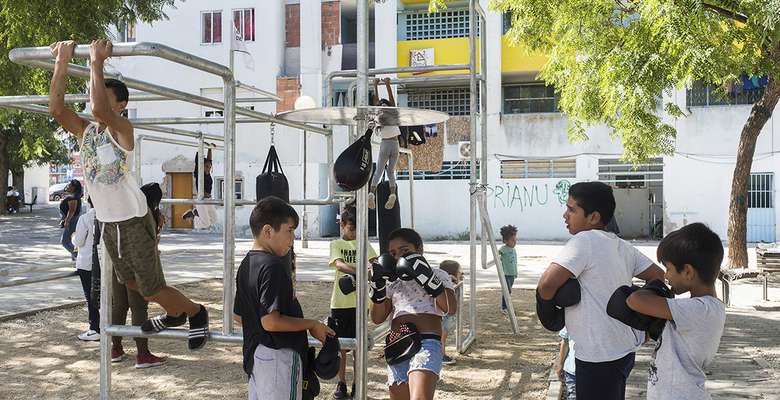
- Site-specific cases
Despite of the minimum material requirements for boxing, or perhaps because of it, the practice of boxing implies great self-control and physical and mental training, factors that help solve society’s needs for violence and offer an alternative to the lethargic and individualistic infrastructure of our current and future cities.
Boxing Boxes is located between the shortage of equipment and the need for catalysts for social integration among immigrants in the Portugal Novo neighborhood, to use boxing as a tool for the exploration of body movement, the contained release of impulses, the empowerment of vulnerable social groups, and the revaluation of leisure or "unproductive" activities.
Within the framework of the Lisbon Architecture Triennial 2019, the installation evidenced the low visibility and stigmatization of a neighborhood ignored for 30 years despite its proximity to the center of Lisbon as well as the need to restore its dignity through architecture and political action.
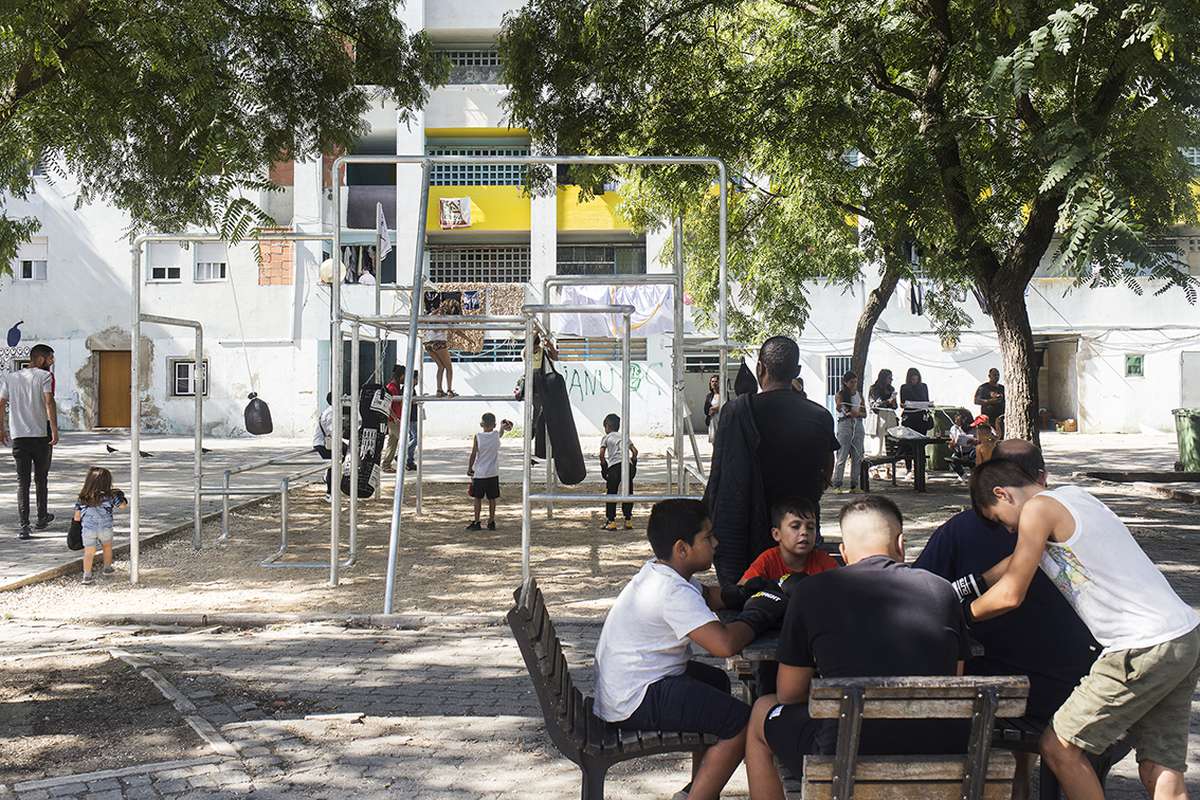
The Portugal Novo housing complex was designed by the architect Manuel Vicente in the 1970s as part of the SAAL program (Serviço de Apoio Ambulatório Local) but it was never completed, leaving homes, common areas, basic education and recreation facilities, among others, unfinished. Due to the irregularity of the settlement a great number of vulnerable African, Indian and Roma immigrants have come to occupy the neighborhood with the difficulty of communication and interaction that it entails.
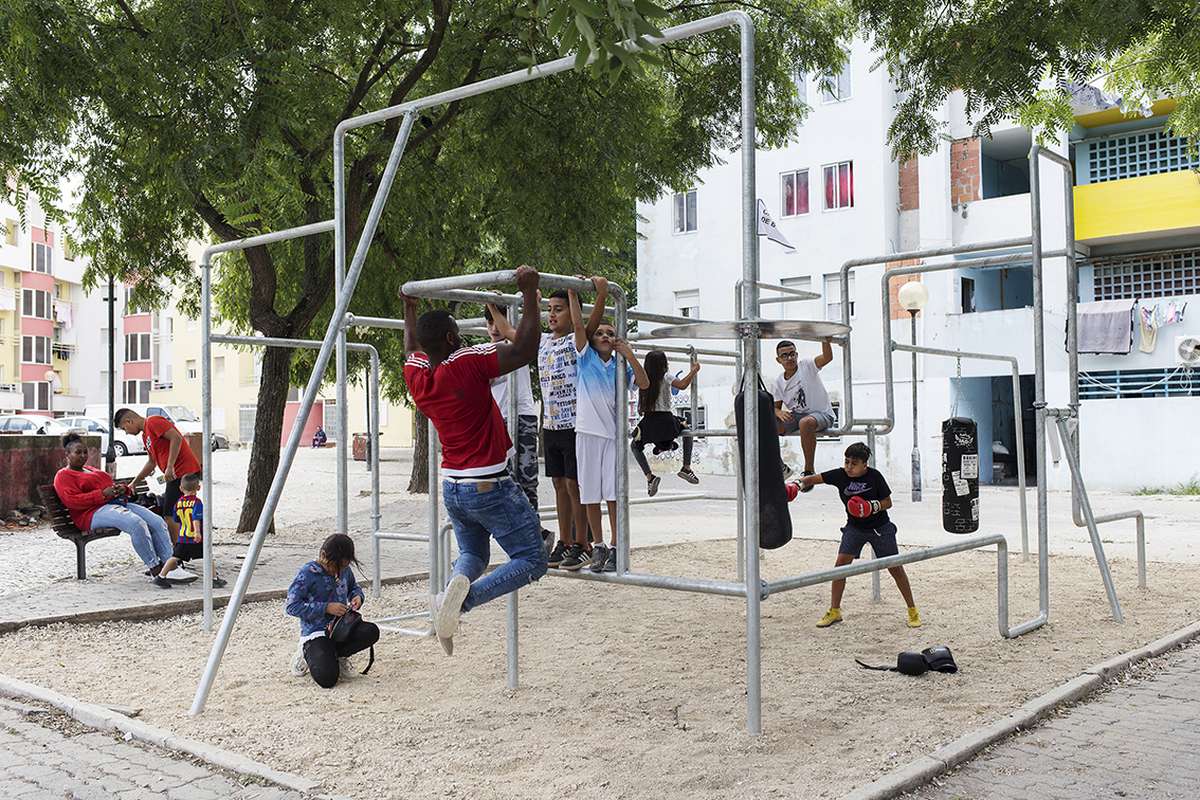
In general terms, the installation is a continuous steel tubular structure, placed in a sandbox, from which boxing equipment is hung. This installation is modulated according to the human body and exercise routines are suggested through an instruction manual. At the same time it is abstract enough to generate the curiosity and inventiveness of children who can gradually become interested in sports and take advantage of the benefits of community life and health.
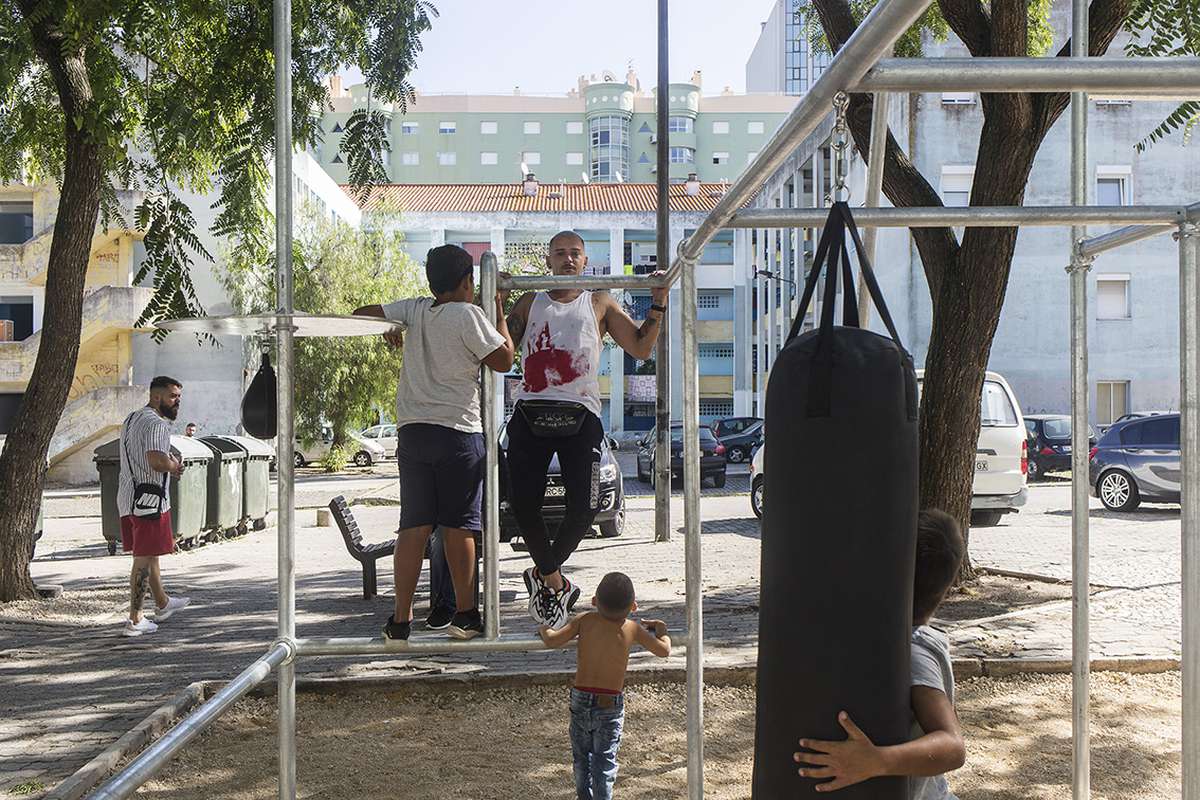
Just before the opening, both children and adults interacted with each other throughout the installation. Whether through the practice of boxing or play, the coexistence of children helps to root the community in their environment and to other members that compose it, regardless of the group to which they belong.
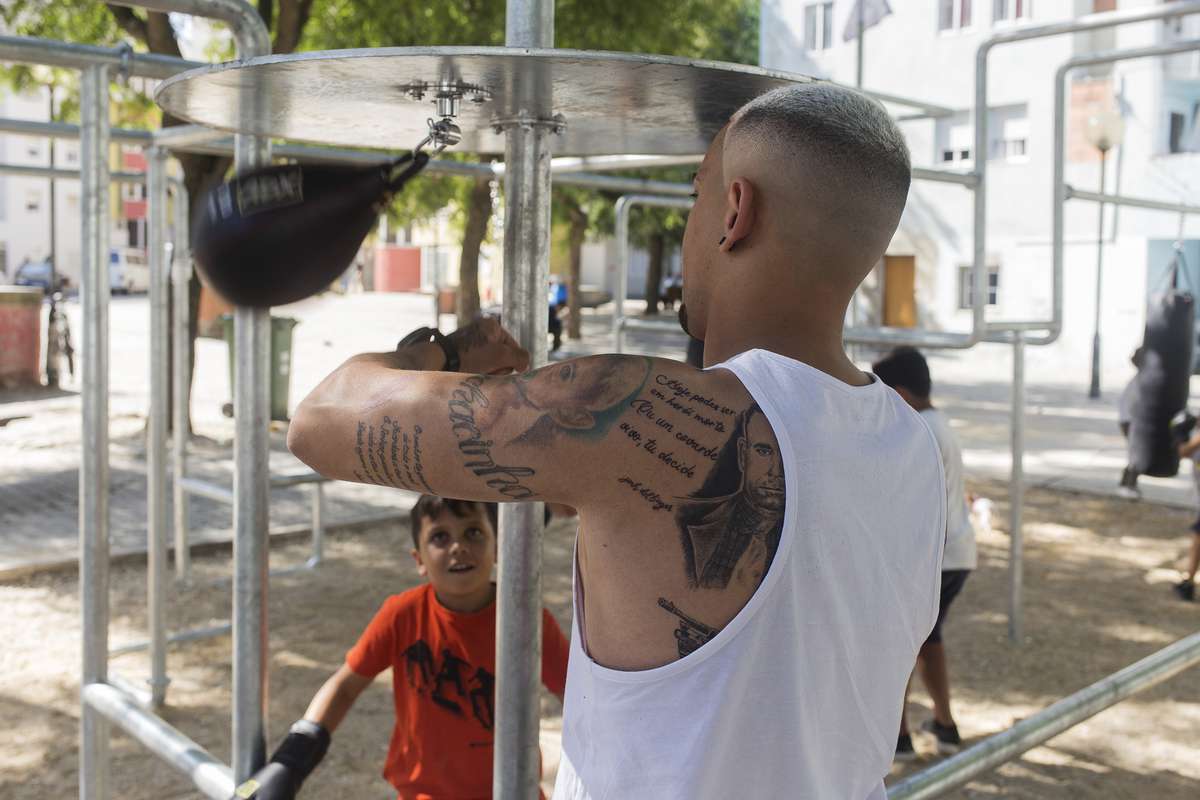
Through the collaboration with neighborhood associations, gyms and local institutions, the design team worked with residents of Portugal Novo to define the project and its objectives. In this way, the logistics were present not only in the work prior to the inauguration but also in the neighborhood planning for maintenance and the gradual transformation of the installation. In the end, what is desired is that new generations learn and practice this form of organization in the future.
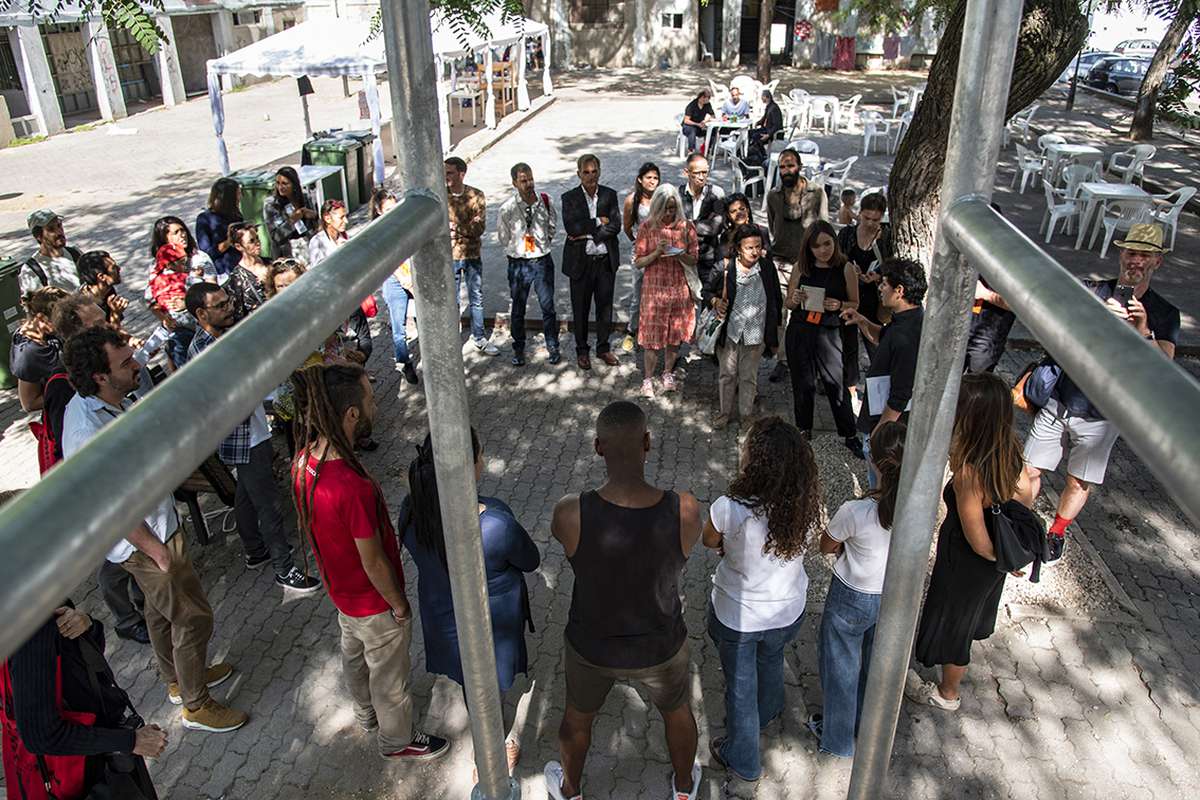
During the opening day of Boxing Boxes as an Associated Project of the Lisbon Architecture Triennial 2019 neighbors, the design team, organizers, curators and journalists were introduced and interacted with each other during a multicultural lunch. This was the culmination of 2 years of architectural research. Today the installation is used for public boxing workshops; what was intended to last a couple of weeks, with the support of the community, will remain as long as the want.
Boxing Boxes
Boxing Boxes

- Site-specific cases
Despite of the minimum material requirements for boxing, or perhaps because of it, the practice of boxing implies great self-control and physical and mental training, factors that help solve society’s needs for violence and offer an alternative to the lethargic and individualistic infrastructure of our current and future cities.
Boxing Boxes is located between the shortage of equipment and the need for catalysts for social integration among immigrants in the Portugal Novo neighborhood, to use boxing as a tool for the exploration of body movement, the contained release of impulses, the empowerment of vulnerable social groups, and the revaluation of leisure or "unproductive" activities.
Within the framework of the Lisbon Architecture Triennial 2019, the installation evidenced the low visibility and stigmatization of a neighborhood ignored for 30 years despite its proximity to the center of Lisbon as well as the need to restore its dignity through architecture and political action.
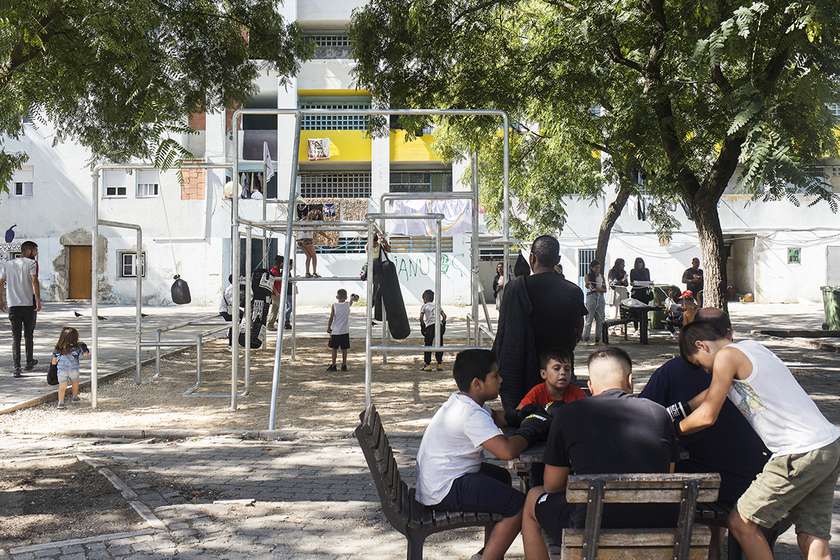
The Portugal Novo housing complex was designed by the architect Manuel Vicente in the 1970s as part of the SAAL program (Serviço de Apoio Ambulatório Local) but it was never completed, leaving homes, common areas, basic education and recreation facilities, among others, unfinished. Due to the irregularity of the settlement a great number of vulnerable African, Indian and Roma immigrants have come to occupy the neighborhood with the difficulty of communication and interaction that it entails.
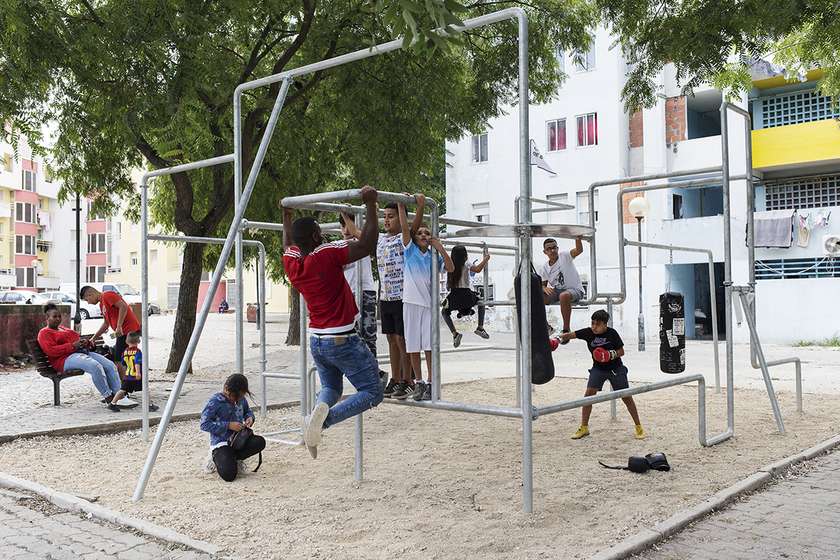
In general terms, the installation is a continuous steel tubular structure, placed in a sandbox, from which boxing equipment is hung. This installation is modulated according to the human body and exercise routines are suggested through an instruction manual. At the same time it is abstract enough to generate the curiosity and inventiveness of children who can gradually become interested in sports and take advantage of the benefits of community life and health.
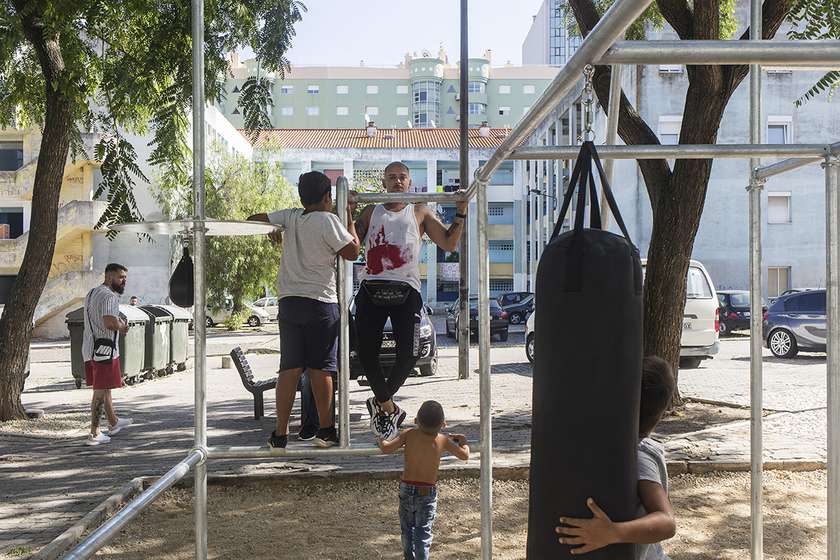
Just before the opening, both children and adults interacted with each other throughout the installation. Whether through the practice of boxing or play, the coexistence of children helps to root the community in their environment and to other members that compose it, regardless of the group to which they belong.

Through the collaboration with neighborhood associations, gyms and local institutions, the design team worked with residents of Portugal Novo to define the project and its objectives. In this way, the logistics were present not only in the work prior to the inauguration but also in the neighborhood planning for maintenance and the gradual transformation of the installation. In the end, what is desired is that new generations learn and practice this form of organization in the future.
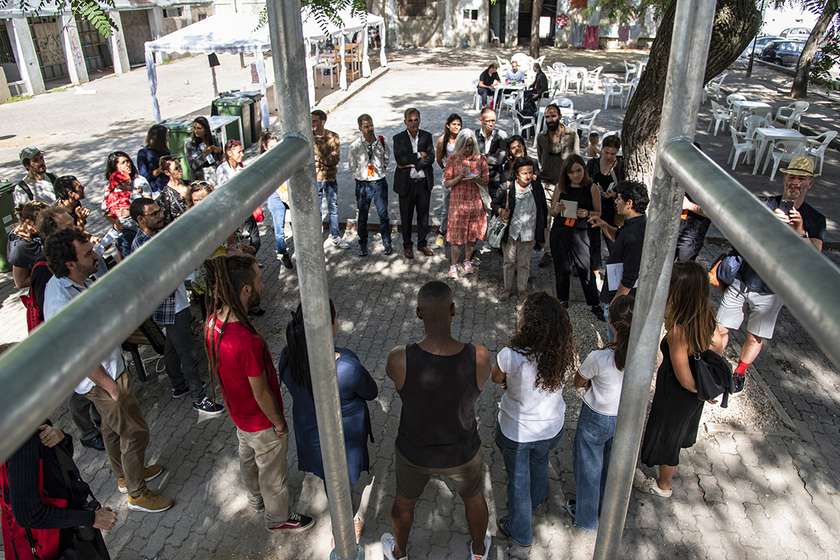
During the opening day of Boxing Boxes as an Associated Project of the Lisbon Architecture Triennial 2019 neighbors, the design team, organizers, curators and journalists were introduced and interacted with each other during a multicultural lunch. This was the culmination of 2 years of architectural research. Today the installation is used for public boxing workshops; what was intended to last a couple of weeks, with the support of the community, will remain as long as the want.